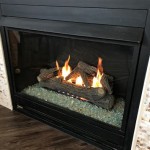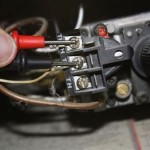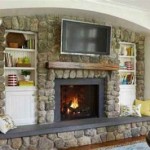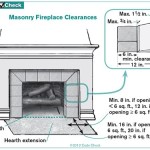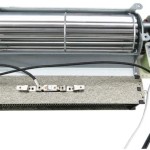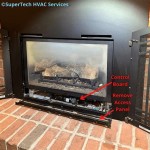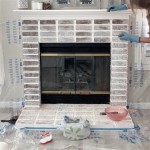Open Fireplace Tips and Tricks for Optimal Performance and Safety
An open fireplace, a classic feature in many homes, offers warmth and ambiance during colder months. To maximize its effectiveness and ensure safe operation, understanding proper techniques and implementing specific strategies is crucial. This article explores key aspects of fireplace management, covering preparation, burning practices, maintenance, and safety protocols.
Preparing the Fireplace for Efficient Burning
Effective fireplace operation begins well before a match is struck. Thorough preparation contributes significantly to a strong, sustained fire with minimal smoke and efficient heat output. This preparation involves several critical steps, starting with chimney inspection and proceeding to wood selection and proper fire-starting techniques.
Chimney Inspection and Cleaning: A clean and unobstructed chimney is paramount for safe and efficient fireplace operation. Creosote, a flammable byproduct of wood combustion, accumulates inside the chimney flue. Regular inspection, ideally performed annually by a qualified professional, is essential to assess creosote buildup. Excessive creosote can lead to chimney fires, posing a significant safety hazard. Professional chimney sweeps utilize specialized equipment to remove creosote and other obstructions, such as bird nests or debris. Addressing any structural issues within the chimney, such as cracks or damaged flue liners, is also crucial to prevent carbon monoxide leaks and structural damage to the home.
Wood Selection and Seasoning: The type and quality of wood burned directly impact the fire's performance. Seasoned hardwood, such as oak, maple, and ash, is the preferred choice. Seasoned wood has a low moisture content (ideally below 20%), which allows it to burn hotter, cleaner, and more efficiently. Green or unseasoned wood contains a high moisture content, resulting in smoky fires that produce significantly less heat and contribute to creosote buildup in the chimney. Seasoning wood involves splitting it and stacking it in a well-ventilated area for at least six months, preferably longer. Covering the top of the woodpile while leaving the sides open promotes air circulation and prevents rain from re-wetting the wood.
Fire Starting Techniques: A well-constructed fire bed promotes efficient combustion. The "top-down" method is often recommended. This involves placing larger logs at the bottom, followed by smaller pieces of kindling on top, and finally, tinder at the very top. Tinder can include materials such as newspaper, dry leaves, or commercially available fire starters. This method allows the fire to burn downwards, gradually igniting the larger logs and producing a more consistent and cleaner burn. Another effective method is the "log cabin" or "teepee" structure, where kindling is placed in the center and surrounded by progressively larger pieces of wood. Adequate airflow is essential for successful fire starting. Ensuring sufficient space between the logs and kindling allows oxygen to circulate, fueling the flames. Avoid using flammable liquids, such as gasoline or kerosene, to start a fire, as these pose a significant safety risk.
Optimizing Burning Practices for Heat and Efficiency
Once the fire is lit, maintaining optimal burning conditions is crucial for maximizing heat output, minimizing smoke, and extending the lifespan of the wood. Several techniques can be employed to achieve these goals, focusing on controlling airflow, managing the fuel load, and monitoring the fire's progress.
Airflow Management: The damper controls the airflow through the chimney. Opening the damper fully allows for maximum draft and initial fire ignition. Once the fire is established, the damper can be partially closed to regulate the burning rate and conserve heat. However, it's critical to ensure that the damper is not closed too much, as this can lead to smoke backdrafting into the room. Observing the smoke patterns provides valuable information about airflow. If smoke is billowing into the room, the damper needs to be opened further. If the fire is burning too rapidly, reducing the damper opening can help to slow it down. Some fireplaces also have air vents located near the bottom of the firebox. These vents can be adjusted to provide additional airflow to the fire, promoting more efficient combustion.
Fuel Load Management: Adding too much wood at once can smother the fire, leading to excessive smoke production. Instead, add wood gradually, allowing each piece to ignite properly before adding more. The size of the logs should be appropriate for the size of the fireplace. Overly large logs may not burn completely, while overly small logs will burn too quickly. Maintain a consistent fuel bed by adding new logs before the existing ones burn down completely. This helps to maintain a steady heat output. Avoid overloading the firebox, as this can create a safety hazard and reduce airflow.
Monitoring and Adjustments: Regularly observe the fire and make adjustments as needed. If the fire is burning too hot, reduce the airflow by partially closing the damper or adding larger logs. If the fire is burning too slowly, increase the airflow by opening the damper further or adding smaller pieces of wood. Pay attention to the color of the flames. Bright, yellow flames indicate efficient combustion. Dark, smoky flames indicate incomplete combustion and the need for adjustments. Use a fireplace poker to rearrange the logs and ensure that they are burning evenly. Remove excess ash from the firebox periodically to improve airflow. A thin layer of ash can help to insulate the fire, but excessive ash buildup can restrict airflow.
Maintaining Fireplace Safety and Preventing Hazards
Safety is paramount when operating a fireplace. Implementing preventative measures and adhering to safety protocols minimizes the risk of fires, carbon monoxide poisoning, and other potential hazards. This includes proper use of safety equipment, regular maintenance, and awareness of potential risks.
Safety Equipment: A functional smoke detector and carbon monoxide detector are essential safety features in any home with a fireplace. Smoke detectors provide an early warning of a fire, while carbon monoxide detectors alert occupants to the presence of this odorless and deadly gas. Test these detectors regularly and replace the batteries at least once a year. A fireplace screen is crucial for preventing sparks and embers from escaping the firebox and igniting nearby materials. The screen should be made of sturdy metal mesh and fit snugly against the fireplace opening. Keep a fire extinguisher readily accessible near the fireplace and ensure that all household members know how to use it. A supply of sand or baking soda can also be used to smother small fires.
Ash Disposal: Proper ash disposal is essential to prevent fires. Never dispose of hot ashes in a plastic container or directly into a garbage can. Ashes can retain heat for several days and can ignite flammable materials. Allow the ashes to cool completely for at least 24 hours before disposing of them. Store the cooled ashes in a metal container with a tight-fitting lid. Place the metal container on a non-combustible surface, away from flammable materials. Once the ashes are completely cold, they can be disposed of in the trash or used as fertilizer in the garden.
General Safety Practices: Never leave a fire unattended, especially when children or pets are present. Teach children about fire safety and keep them a safe distance from the fireplace. Keep flammable materials, such as curtains, furniture, and newspapers, well away from the fireplace. Do not use the fireplace to burn trash, paper products, or other materials that can produce excessive smoke or toxic fumes. Ensure that the chimney is properly vented to prevent carbon monoxide buildup in the home. If you suspect a chimney fire, evacuate the house immediately and call the fire department. Regularly inspect the fireplace and surrounding area for any signs of damage or wear. Address any issues promptly to prevent further damage or safety hazards.

Aap Offers Fireplace Safety Tips Newsymom

Tips For A Fireplace What You Should Know
How To Start A Fireplace Fire 2 Safe And Easy Methods

Fireplaces Tips Tricks When Using Cemcrete S

Fireplace Tips For Burning Wood All Winter Long Mr Handyman

10 Fireplace Makeover Ideas Before And After Regency

10 Ways To Warm Up A Nonworking Fireplace This Old House
.webp?strip=all)
Fireplace Tips For Burning Wood All Winter Long Mr Handyman

56 Fireplace Decor Ideas For Warmth And Style Year Round

Five Tips For Choosing The Right Fireplace Your Living Room Block
Related Posts

